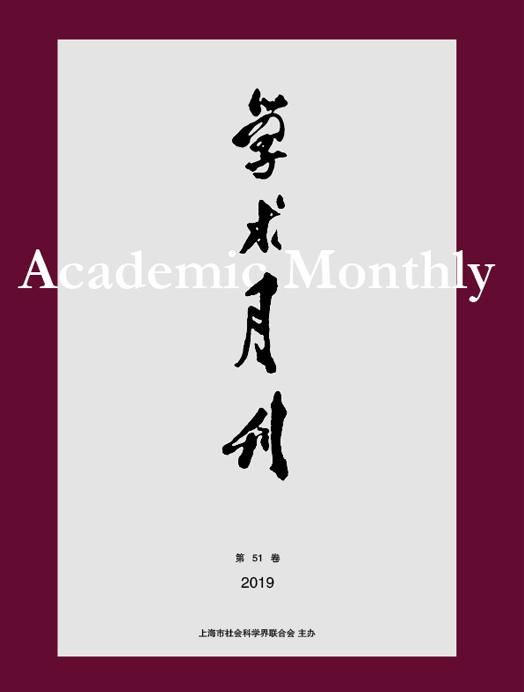Citation:
Xiaobai CHU. On the Family-Nation Discourse and Its Symbolic Structure during the Anti-Foreign-Religion Movement in Late Qing Dynasty[J]. Academic Monthly, 2021, 53(3): 146-159.

On the Family-Nation Discourse and Its Symbolic Structure during the Anti-Foreign-Religion Movement in Late Qing Dynasty
-
Abstract
After the Opium War, Christianity gained its legal missionary status in China, but the Anti-Foreign-Religion movement became more intense, and finally reached its peak during the Boxer Uprising in 1900. From the perspective of symbolic anthropology, this paper examines the family-nation discourse and its symbolic cultural structure from four aspects: the structure of family power in the traditional rural society, the metaphorical legitimacy on transforming the sense of family protection into the family-nation discourse, the nationalistic reconstruction of the popular views on calamities, and the integration and implementation of the family-nation discourse. It reveals how the communal consciousness, which was eager to release various social conflicts and express symbolic power, was produced, transformed, integrated and implemented.
-

-
References
-
Access
-
-
[1]
Fan GAO
. The “Miracle” of Poverty Reduction in China from the Perspective of Urban-rural Dual Structure Transformation. Academic Monthly,
2020, 52(9): 54-66.
-
[2]
CHEN Jiajian
. Between Administration and Autonomy: The Dual Attributes of Community Finance and Its Governance Mechanism. Academic Monthly,
2023, 55(5): 120-130.
-
[3]
LI Jingkui
. Labor Contract Law,Enterprise Boundary and New Labor Dual Market. Academic Monthly,
2023, 55(8): 61-79.
-
[4]
ZHOU Tianyong
. A New Mathematical Logical Framework for Explaining China’s Economic Growth—— Analytical Approaches Based on Distortion Differences in Dual-track System. Academic Monthly,
2023, 55(11): 39-51.
-
[5]
. . Academic Monthly,
2017, 49(01): 42-56.
-
[6]
Haiqing WEN
. Reanalysis on the Culture Implications of the Typified Numbers with 7 in the Mongolian and Yuan Times. Academic Monthly,
2021, 53(2): 195-205.
-
[7]
WU Siyuan
. From “Power Orientation” to “Right Standard”:Contravention and Return of Rule of Law in Criminal Online Litigation. Academic Monthly,
2024, 56(2): 124-135.
-
[8]
Xueyang CHENG
. From Family State to People’s Republic State: The Historical Logic of the Transformation of “Tianxia-China”. Academic Monthly,
2022, 54(5): 107-118.
-
[9]
,
,
. . Academic Monthly,
2017, 49(03): 48-60.
-
[10]
Hongtu WANG
. Coincidence and Disruption between Family/Nation and Individual Mind Narratives. Academic Monthly,
2020, 52(10): 116-129.
-
[11]
Liang GUO
. The Relationship between Family and State: An Important Local Perspective to Understand the Changes of Social Governance Since Modern China. Academic Monthly,
2021, 53(5): 96-105.
-
[12]
WANG Ye
. Horizontal Power Structure and Local government Responsiveness: Division and Coordination. Academic Monthly,
2024, 56(2): 103-114.
-
[13]
. . Academic Monthly,
2022, 54(6): 24-29.
-
[14]
Youquan OUYANG
, Zhen DENG
. The Origin, Shaping and Forward Path of Chinese ACGN Culture. Academic Monthly,
2020, 52(3): 132-140.
-
[15]
Donghua ZHOU
. China’s Status as a Major Power and Discourse Power in International Affairs after the Breakout of the Pacific War. Academic Monthly,
2021, 53(7): 202-216.
-
[16]
Qinghua CAO
. Jianghu Imagination and Power Practice. Academic Monthly,
2019, 51(9): 143-151, 184.
-
[17]
Jianyong FENG
, Yuhai HU
. Geopolitics and Power Competition. Academic Monthly,
2021, 53(7): 187-201.
-
[18]
Zao ZHANG
. Liang Zongdai and Symbolist Poetics. Academic Monthly,
2019, 51(1): 135-149.
-
[19]
Juhua YANG
. The Substitution of Father’s Power and Contextual Power: Intergenerational Relationship in the Digital Age. Academic Monthly,
2022, 54(11): 121-133.
-
[20]
Yiwei SONG
. The Textual Circulation and Symbolic Meaning of “ying-te-na-xiong-nai-er”. Academic Monthly,
2021, 53(6): 205-216.
-
-



 沪公网安备 31010102003103号
沪公网安备 31010102003103号 DownLoad:
DownLoad: